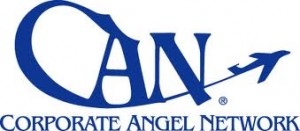LAN CARGO to Begin Operations in Central America
August 26, 2008
MIAMI, Aug. 25 /PRNewswire-FirstCall/ — LAN CARGO has announced that
it will launch service between Miami and Guatemala City, Guatemala, and San
Jose, Costa Rica in September of this year.
“This is another step in our goal to connect Latin America with the
world,” said Cristian Ureta, CEO, LAN CARGO.
The cargo market between the U.S. and Central America currently
transports approximately 180,000 tons annually including both imports and
exports.
This new operation will rely on a modern fleet of Boeing 767-300F
aircraft which will be joined by new Boeing 777F aircraft during the first
quarter of 2009.
About LAN Airlines
LAN Airlines (NYSE: LFL) and its affiliates LAN Argentina, LAN Ecuador
and LAN Peru, offer a united spirit of reliability and charm that provides
passengers the highest level of service and safety; a complete travel
experience throughout the skies of the Americas.
LAN’s vast route network reaches a large number of destinations
throughout the world, including the Americas, Europe and the South Pacific.
LAN and its affiliates offer flights from North America to Argentina,
Brazil, Chile, Colombia, Dominican Republic, Ecuador, Peru, Uruguay and
Venezuela with service from over 40 cities in the US and Canada, including
its Miami, New York, Los Angeles and Toronto gateways. Passengers traveling
with any of the LAN affiliates may accumulate frequent flyer
kilometers/miles in LANPASS, which can be exchanged for American Airlines’
AAdvantage miles or any other frequent flyer program member of the
oneworld(R) Alliance. LAN Airlines is a member of oneworld the world’s
leading quality global airline alliance.
For additional information, contact LAN toll-free at 866-I-FLY-LAN
(866-435-9526). Visit LAN’s website at http://www.LAN.com .
SOURCE LAN Airlines
NASA Renames Observatory for Fermi, Reveals Entire Gamma-Ray Sky
August 26, 2008
WASHINGTON, Aug. 26 /PRNewswire-USNewswire/ — NASA’s newest
observatory, the Gamma-Ray Large Area Space Telescope, or GLAST, has begun
its mission of exploring the universe in high-energy gamma rays. The
spacecraft and its revolutionary instruments passed their orbital checkout
with flying colors.
NASA announced today that GLAST has been renamed the Fermi Gamma-ray
Space Telescope. The new name honors Prof. Enrico Fermi (1901 – 1954), a
pioneer in high-energy physics.
“Enrico Fermi was the first person to suggest how cosmic particles
could be accelerated to high speeds,” said Paul Hertz, chief scientist for
NASA’s Science Mission Directorate at NASA Headquarters in Washington. “His
theory provides the foundation for understanding the new phenomena his
namesake telescope will discover.”
Scientists expect Fermi will discover many new pulsars in our own
galaxy, reveal powerful processes near supermassive black holes at the
cores of thousands of active galaxies and enable a search for signs of new
physical laws.
For two months following the spacecraft’s June 11 launch, scientists
tested and calibrated its two instruments, the Large Area Telescope (LAT)
and the GLAST Burst Monitor (GBM).
The LAT team today unveiled an all-sky image showing the glowing gas of
the Milky Way, blinking pulsars, and a flaring galaxy billions of
light-years away. The map combines 95 hours of the instrument’s “first
light” observations. A similar image, produced by NASA’s now-defunct
Compton Gamma-ray Observatory, took years of observations to produce.
The image shows gas and dust in the plane of the Milky Way glowing in
gamma rays due to collisions with accelerated nuclei called cosmic rays.
The famous Crab Nebula and Vela pulsars also shine brightly at these
wavelengths. These fast-spinning neutron stars, which form when massive
stars die, were originally discovered by their radio emissions. The image’s
third pulsar, named Geminga and located in Gemini, is not a radio source.
It was discovered by an earlier gamma-ray satellite. Fermi is expected to
discover many more radio-quiet pulsars, providing key information about how
these exotic objects work.
A fourth bright spot in the LAT image lies some 7.1 billion light-years
away, far beyond our galaxy. This is 3C 454.3 in Pegasus, a type of active
galaxy called a blazar. It’s now undergoing a flaring episode that makes it
especially bright.
The LAT scans the entire sky every three hours when operating in survey
mode, which will occupy most of the telescope’s observing time during the
first year of operations. These fast snapshots will let scientists monitor
rapidly changing sources.
The instrument detects photons with energies ranging from 20 million
electron volts to over 300 billion electron volts. The high end of this
range, which corresponds to energies more than 5 million times greater than
dental X-rays, is little explored.
The spacecraft’s secondary instrument, the GBM, spotted 31 gamma-ray
bursts in its first month of operations. These high-energy blasts occur
when massive stars die or when orbiting neutron stars spiral together and
merge.
The GBM is sensitive to less energetic gamma rays than the LAT. Bursts
seen by both instruments will provide an unprecedented look across a broad
gamma-ray spectrum, enabling scientists to peer into the processes powering
these events.
NASA’s Fermi Gamma-ray Space Telescope is an astrophysics and particle
physics partnership, developed in collaboration with the U.S. Department of
Energy, along with important contributions from academic institutions and
partners in France, Germany, Italy, Japan, Sweden and the U.S.
For more information, images and animations on the Web, visit:
http://www.nasa.gov/glast
SOURCE NASA
Boeing Awarded US Army Contract for 191 CH-47F Chinook Helicopters
August 26, 2008
ST. LOUIS, Aug. 26 /PRNewswire-FirstCall/ — The Boeing Company (NYSE:
BA) has been awarded a five-year U.S. Army contract valued at $4.3 billion
for 181 CH-47F Chinooks and 10 additional Chinooks under Fiscal Year 2008
supplemental funding. There are options in the award for an additional 24
aircraft over the course of the contract.
“This multiyear award will yield a cost savings of more than $449
million for the U.S. Army and taxpayers,” said Jack Dougherty, vice
president, Boeing H-47 Programs. “This also builds security into our
production schedule for the next five years, stabilizing the work force for
Boeing and for our supplier partners in more than 45 states.”
“The Army is committed to providing an outstanding CH-47F Chinook
aircraft to our soldiers in the field,” said Col. Newman Shufflebarger,
Army project manager for Cargo Helicopters. “This multiyear award not only
allows the Army to field this important aircraft at a substantial savings,
but enabled the contractor to enter long-term agreements for specialty
metals, to include titanium, which significantly reduced long-lead times
for these critical materials. The Army was able to reduce the lead time
associated with a new-build aircraft by six months.”
Also from the U.S. Army, Lt. Col. Thomas H. Todd III, product manager
for CH-47F, said, “This multiyear settlement is the result of the tireless
efforts of government and Boeing representatives. It ensures that our
soldiers will maintain a technological advantage over our adversaries when
it comes to heavy-lift missions.”
“A long-term contract commitment is good for the warfighter, the Army
customer and U.S. business,” said Ken Eland, chief engineer for Boeing
Tandem Rotor Programs and capture team leader for the company’s CH-47F
multiyear pursuit. “This award enables Boeing and our Team Chinook partners
to make capital investments to reduce lead times for parts and components,
improve parts availability and provide for a more accurate delivery
schedule, which will enable greater precision in fielding the Chinook to
U.S. Army units.”
Boeing Rotorcraft Systems has delivered 48 CH-47F helicopters to the
U.S. Army to date and has fully trained and equipped two units, with a
third unit scheduled to stand up in August. Since the aircraft received its
combat-ready certification from the Army in 2007, the F-model has completed
several thousand flight hours, including deployments to Liberia in support
of U.S. President George Bush, and is currently undergoing its first
deployment to Iraq.
As with its predecessors, the CH-47F continues to excel across the full
spectrum of operational missions, including air assault, combat re-supply,
humanitarian relief, search and rescue, and transport operations.
Built at the Boeing Rotorcraft Systems facility in Ridley Township,
Pa., the CH-47F helicopter delivers greater mission-critical capability for
the warfighter with a newly designed, improved airframe, a Rockwell Collins
Common Avionics Architecture System (CAAS) cockpit, and a BAE-designed
Digital Advanced Flight Control System (DAFCS).
The CAAS greatly improves aircrew situational awareness, and DAFCS
provides dramatically improved flight-control capabilities through the
entire flight envelope, significantly improved performance and safety in
the harshest of environments.
CAAS also incorporates an advanced digital map display and a data
transfer system that allows storing of preflight and mission data. Improved
survivability features include the Common Missile Warning and Improved
Countermeasure Dispenser systems.
Powered by two 4,733-horsepower Honeywell engines, the new CH-47F can
reach speeds greater than 175 mph and transport more than 21,000 pounds.
The CH-47F, with the Robertson Aviation Extended Range Fuel System, has a
mission radius of more than 400 nautical miles.
A unit of The Boeing Company, Boeing Integrated Defense Systems is one
of the world’s largest space and defense businesses specializing in
innovative and capabilities-driven customer solutions. Headquartered in St.
Louis, Boeing Integrated Defense Systems is a $32.1 billion business with
71,000 employees worldwide.
SOURCE Boeing Integrated Defense Systems
NASA’s Mars Rover Opportunity Climbing out of Victoria Crater
August 26, 2008
PASADENA, Calif., Aug. 26 /PRNewswire-USNewswire/ — NASA’s Mars
Exploration rover Opportunity is heading back out to the Red Planet’s
surrounding plains nearly a year after descending into a large Martian
crater to examine exposed ancient rock layers.
“We’ve done everything we entered Victoria Crater to do and more,” said
Bruce Banerdt, of NASA’s Jet Propulsion Laboratory in Pasadena, Calif.
Banerdt is project scientist for Opportunity and its rover twin, Spirit.
Having completed its job in the crater, Opportunity is now preparing to
inspect loose cobbles on the plains. Some of these rocks, approximately
fist-size and larger, were thrown long distances when objects hitting Mars
blasted craters deeper than Victoria into the Red Planet. Opportunity has
driven past scores of cobbles but examined only a few.
“Our experience tells us there’s lots of diversity among the cobbles,”
said Scott McLennan of the State University of New York, Stony Brook.
McLennan is a long-term planning leader for the rover science team. “We
want to get a better characterization of them. A statistical sampling from
examining more of them will be important for understanding the geology of
the area.”
Opportunity entered Victoria Crater on Sept. 11, 2007, after a year of
scouting from the rim. Once a drivable inner slope was identified, the
rover used contact instruments on its robotic arm to inspect the
composition and textures of accessible layers.
The rover then drove close to the base of a cliff called “Cape Verde,”
part of the crater rim, to capture detailed images of a stack of layers 20
feet tall. The information Opportunity has returned about the layers in
Victoria suggest the sediments were deposited by wind and then altered by
groundwater.
“The patterns broadly resemble what we saw at the smaller craters
Opportunity explored earlier,” McLennan said. “By looking deeper into the
layering, we are looking farther back in time.” The crater stretches
approximately a half mile in diameter and is deeper than any other seen by
Opportunity.
Engineers are programming Opportunity to climb out of the crater at the
same place it entered. A spike in electric current drawn by the rover’s
left front wheel last month quickly settled discussions about whether to
keep trying to edge even closer to the base of Cape Verde on a steep slope.
The spike resembled one seen on Spirit when that rover lost the use of its
right front wheel in 2006. Opportunity’s six wheels are all still working
after 10 times more use than they were designed to perform, but the team
took the spike in current as a reminder that one could quit.
“If Opportunity were driving with only five wheels, like Spirit, it
probably would never get out of Victoria Crater,” said JPL’s Bill Nelson, a
rover mission manager. “We also know from experience with Spirit that if
Opportunity were to lose the use of a wheel after it is out on the level
ground, mobility should not be a problem.”
Opportunity now drives with its robotic arm out of the stowed position.
A shoulder motor has degraded over the years to the point where the rover
team chose not to risk having it stop working while the arm is stowed on a
hook. If the motor were to stop working with the arm unstowed, the arm
would remain usable.
Spirit has resumed observations after surviving the harshest weeks of
southern Martian winter. The rover won’t move from its winter haven until
the amount of solar energy available to it increases a few months from now.
The rover has completed half of a full-circle color panorama from its
sun-facing location on the north edge of a low plateau called “Home Plate.”
“Both rovers show signs of aging, but they are both still capable of
exciting exploration and scientific discovery,” said JPL’s John Callas,
project manager for Spirit and Opportunity.
The team’s plan for future months is to drive Spirit south of Home
Plate to an area where the rover last year found some bright, silica-rich
soil. This could be possible evidence of effects of hot water.
For images and information about NASA’s Opportunity and Spirit Mars
rovers, visit:
http://www.nasa.gov/rovers
SOURCE NASA
NASA’s Space Shuttle Atlantis to Move to Launch Pad Saturday
August 26, 2008
CAPE CANAVERAL, Fla., Aug. 25 /PRNewswire-USNewswire/ — Space shuttle
Atlantis is scheduled to roll out to Launch Pad 39A at NASA’s Kennedy Space
Center on Saturday, Aug. 30. Atlantis is targeted to lift off Oct. 8 to
repair the Hubble Space Telescope.
The first motion of the shuttle out of Kennedy’s Vehicle Assembly
Building is scheduled for 12:01 a.m. EDT. The fully assembled space
shuttle, consisting of the orbiter, external tank and twin solid rocket
boosters, was mounted on a mobile launcher platform and will be delivered
to the pad atop a crawler-transporter. The crawler will travel slower than
1 mph during the 3.4-mile journey. The process is expected to take
approximately six hours.
Repairs to Launch Pad 39A’s flame trench wall were completed Aug. 5
after crews installed a steel grid structure and covered it in a
heat-resistant material. The pad’s north flame trench was damaged when
bricks tore away from the wall during the May 31 launch of space shuttle
Discovery.
NASA Television will provide live coverage of Atlantis’ move to the
launch pad beginning at 6:30 a.m. Video highlights of the rollout will air
on NASA TV Video File.
Media are invited to a photo opportunity of roll out and an interview
availability with Atlantis Flow Director Angie Brewer at 8 a.m. Saturday.
Dates and times of this event are subject to change. Updates are available
by calling 321-867-2525.
Reporters must arrive at Kennedy’s news center by 6 a.m. Saturday for
transportation to the viewing area. Foreign news media accreditation for
this event has closed. Foreign media with credentials must arrive at the
Pass and I-D Building on State Road 3 by 6 a.m. for transportation to the
news center. U.S. media without permanent Kennedy Space Center credentials
must apply for accreditation online by 4 p.m. Wednesday, Aug. 27, at:
https://media.ksc.nasa.gov.
Badges must be picked up by 4 p.m. Friday, Aug. 29, at the new Kennedy
Badging Office on State Road 405, west of Gate 3 (just past the Kennedy
Visitor’s Complex).
During its 11-day mission that includes five spacewalks, the STS-125’s
crew of seven astronauts will install two new instruments in Hubble, as
well as replace the Fine Guidance Sensor. The result will be six working,
complementary science instruments with capabilities beyond those now
available, and an extended operational lifespan of the telescope through at
least 2013.
Atlantis will be commanded by Scott Altman. Gregory C. Johnson will be
pilot. Mission Specialists will be John Grunsfeld, Mike Massimino, Megan
McArthur, Andrew Feustel and Michael Good.
LAN Galardonada como Mejor Línea Aérea de América del Sur
August 26, 2008
MIAMI, 26/08/2008 /PRNewswire/ — Una vez más, LAN fue galardonada y nombrada la Mejor Línea Aérea de América del Sur durante la reciente ceremonia anual de los premios “World Airline Awards”. SkyTrax, la prestigiosa empresa inglesa de investigación de mercado, fue la organizadora del evento.
Los resultados de los premios 2008 se basan en la encuesta mundial anual a pasajeros, realizada por SkyTrax. Este estudio, que se llevó a cabo entre agosto de 2007 y junio de 2008, es la encuesta global más importante que se entrega a los pasajeros de líneas aéreas. Alrededor de 15 millones de entrevistas a pasajeros se realizaron a viajeros de 95 nacionalidades distintas. La encuesta midió cerca de 35 aspectos diferentes de satisfacción del pasajero al utilizar los productos y servicios de cada una de las compañías y evaluó la experiencia completa tanto en tierra como a bordo. (FUENTE LAN Airlines)
LAN CARGO Comenzará sus Operaciones en América Central
August 26, 2008
MIAMI, 26/08/2008 /PRNewswire-FirstCall/ — LAN CARGO ha anunciado el lanzamiento de su servicio de vuelos entre Miami y las ciudades de Guatemala, en Guatemala, y San José, en Costa Rica, a partir de septiembre de este año.
“Este es un nuevo paso hacia nuestra meta de conectar América Latina con el mundo”, comentó Cristian Ureta, CEO de LAN CARGO.
El mercado de cargas entre Estados Unidos y América Central representa actualmente el transporte de alrededor de 180.000 toneladas anuales en importaciones y exportaciones.
Esta nueva operación contará para su funcionamiento con una moderna flota de aeronaves Boeing 767-300F, a las que se sumarán otras aeronaves Boeing 777F durante el primer trimestre de 2009. (FUENTE LAN Airlines)
Afriqiyah Airways Orders GE’s CF6 Engines for Its Airbus A330 Aircraft Fleet
August 26, 2008
GE AVIATION NEWS RELEASE
Afriqiyah Airways Orders GE’s CF6 Engines for Its Airbus A330 Aircraft
Fleet
EVENDALE, Ohio – August 26, 2008 – Afriqiyah Airways has ordered GE’s
CF6-80E1 engines to power its three firm and three option Airbus A330
aircraft. The firm engine order is valued at more than $100 million list
price. Deliveries will begin in May 2009.
Capt. Sabri Shadi, Afriqiyah Airways President and Chairman, declared:
“Afriqiyah Airways is pleased to select once more another engine type of
GE products to fly its new A330-200s planned for delivery on mid 2009.
This would surely enhance our relationship with GE Aviation, and we look
forward to be provided with their support services that could ensure
realizing the benefits which are trusted by GE for their customers.”
“While Afriqiyah Airways currently operates CFM56* engines on its A320
fleet, this is the airline’s first GE engine order,” said Jack Lutze,
vice president of sales for GE Aviation’s Western Europe and Africa
region. “GE Aviation is very excited to be a part of the airlines’
growth plans. With outstanding fuel efficiency and overall low cost of
ownership, the CF6-80E1 engine will bring many benefits to Afriqiyah
Airways for years to come.”
GE’s CF6 engines have been among the most utilized and reliable in the
industry. Powering more than 10 models of wide-body aircraft, the engine
has established an unparalleled record of reliability and compiled more
than 320 million flight-hours in service with more than 250 customers
worldwide.
GE remains committed to the CF6-80E1 engine and continues to invest in
technology improvements for the engine. These advancements, along with
proactive maintenance and operational procedures, have significantly
increased the engine’s time on wing in the last four years.
This year, the CF6-80E1 engine began incorporating the advanced
technology from the Tech CF6 program on production engines. The new
improved technology includes high pressure turbine airfoil advancements
that enhance operational reliability, lower maintenance costs and
improve fuel burn retention.
Based in Tripoli, Afriqiyah Airways is 100 percent controlled by the
Libyan government. The company started in December 2001 and has expanded
operations to include domestic and international routes from Africa to
Europe.
GE Aviation, an operating unit of General Electric Company (NYSE: GE),
is a world-leading provider of commercial and military jet engines and
components as well as integrated digital, electric power, and mechanical
systems for aircraft. GE Aviation also has a global service network to
support these offerings. For more information, visit us at
www.ge.com/aviation.
# # #
*CFM is a registered trademark of CFM International, a 50/50 joint
company between Snecma and GE.
Alaska Airlines Names Navin Mithel Managing Director of Customer Relationship Management
August 25, 2008
SEATTLE, Aug. 25 /PRNewswire-FirstCall/ — Alaska Airlines announced
today that Navin Mithel has joined the company as managing director of
customer relationship management. In this position, he will lead the
airline’s interactive marketing programs, including online marketing,
e-mail, targeted campaigns and its award-winning Web site (alaskaair.com).
Mithel comes to Alaska Airlines with 19 years of experience in business
intelligence, customer relationship management and interactive marketing.
Most recently, he was a managing partner at Ascentium Corp., a Bellevue,
Wash.-based interactive marketing firm. Mithel also spent 12 years with
Lante Corp., where he served as a software developer, founder and manager
of the company’s New York office and principal of its Seattle office.
“Navin is a proven leader in helping companies build unique and
profitable relationships with their customers,” said Steve Jarvis, Alaska
Airlines’ vice president of marketing, sales and customer experience. “We
are very pleased to have someone with his talent and experience join our
team.”
Mithel holds a bachelor’s degree in computer science from Simon Fraser
University in Vancouver, B.C., and a master’s in business administration
from the University of Washington.
Alaska Airlines and sister carrier Horizon Air together serve 95 cities
through an expansive network in Alaska, the Lower 48, Hawaii, Canada and
Mexico. For reservations, visit alaskaair.com. For more news and
information, visit the Alaska Airlines/Horizon Air Newsroom at
alaskaair.com/newsroom.
SOURCE Alaska Airlines
Southwest Airlines Announces New Vice President Strategy & Change Leadership
August 25, 2008
| Gary Kelly, Southwest Airlines CEO. (PRNewsFoto) DALLAS, TX USA |
|||
| � | � | ||
| Southwest Airlines unveils new look. (PRNewsFoto) DALLAS, TX USA |
|||
| � | � | ||
| Southwest Airlines logo. (PRNewsFoto) DALLAS, TX USA |
|||
DALLAS, Aug. 25 /PRNewswire-FirstCall/ — Southwest Airlines recently
appointed Kathleen Wayton as Vice President Strategy and Change Leadership.
In her new position, Wayton will be responsible for providing executive
leadership and direction for the Company’s Strategy, Change Leadership, and
Portfolio Management Teams.
“Kathleen’s love for developing People, drive for results, her work
ethic, and knack for boiling the complex down into the real “to-dos” has
made her the perfect Leader for this group,” said Bob Jordan, Executive
Vice President Strategy and Planning. “Having worked closely with Kathleen
over the last year as she built our Teams, I know that she will be great in
her new Leadership role.”
Wayton will lead the continued development and implementation of the
Company’s strategic plan. Additionally, she will drive companywide change
and improvement projects; oversee the management of the Company’s portfolio
of investment opportunities; provide project management support; and
support the development of the tools and processes to govern and manage
strategy and project execution.
Wayton joined Southwest in 2004 as a Director in Technology, leading
our Enterprise Data Team. She was then promoted to Senior Director over the
Rapid Rewards and southwest.com Teams in Technology. Last April, she moved
to the Strategic Planning Department as Senior Director.
“I look forward to continuing to work alongside the best Employees in
the industry to provide strategic direction for Southwest Airlines,” Wayton
said. “This is one of the most exciting times in Southwest’s history, and
I’m honored to be a part of it.”
Kathleen grew up in Odessa, Texas, and graduated from the University of
North Texas with a BA in Marketing.
Southwest Airlines (NYSE: LUV), the nation’s largest carrier in terms
of domestic passengers enplaned, currently serves 64 cities in 32 states.
Based in Dallas, Southwest currently operates more than 3,400 flights a day
and has 34,000+ Employees systemwide.







